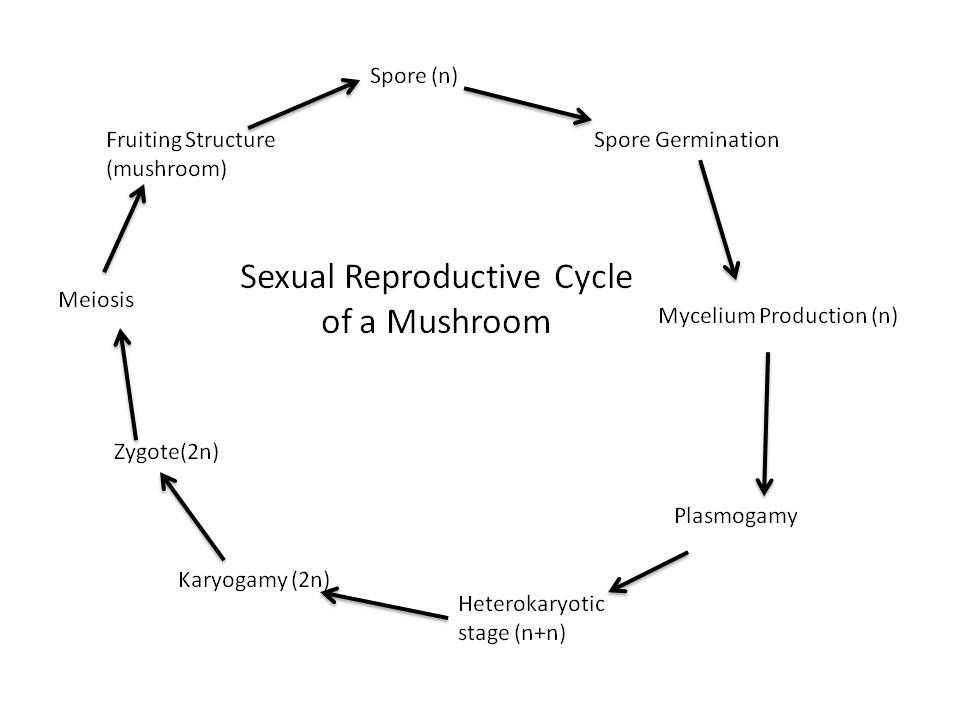Life Cycle and Reproduction
In the summer and fall the fruiting bodies or mushroom of
G. lucidum release millions of spores into the air.
These spores get blown into new places and if the conditions are
suitable, the spore is able to germinate and a primary hypha
gets formed. This new primary hypha must find a mate to
continue on in the growth cycle. This process is
comparable to a sperm and egg fusing into a more complete
organism, although the nuclei of the fungi do not fuse as they
would in animal fertilization. Instead this process is
called plamogamy, meaning that the cytoplasms fuse together.
The fungus is now in a dikaryon state(n+n). The fungus can
not produce secondary hypha to help with growth. This
secondary hypha produces a very strong decomposing chemical
called hydrolase to help break down wood. As long as the
wood source is sufficient, the secondary hypha can continue to
grow for many years. These hyphae can branch out in order
to increase surface area for nutrient uptake. All of these
hyphae combined together are known as a mycelium.

When conditions finally become unsuitable for optimal growth; the fungus must produce a fruiting body to release sexual spores that can be spread to more favorable conditions. These fruiting bodies, more commonly known as mushrooms, produce basidium. It is in these club shaped structures that the nuclei finally combine in the process called karogagmy(2n). Then through the process of meiosis, the diploid cells are broken down into four haploid(n) spores. These spores get released from the basidium when this process is completely. In G. lucidum, the basidium are found on the underside of the fruiting body. The topside is normally a tougher structure and isn’t responsible for releasing any spores. Once these spores are released into the air, the cycle can begin again.
It should be noted that G. ludicum
can come in
many different colors.
Ganoderma lucidum also know as Reishi in Japanese
cultures can come in shades of red, purple, white, blue, yellow,
and black. Typically young mushrooms show shades of white and yellow
as they are developing.
Another interesting fact is that the fruiting body can
also come in a variety of forms.
One is the typical mushroom, where the very top or cap is
a semicircle with a thinner stem leading up to it.
Another form is called conk or shelf mushroom.
This kidney shaped
mushroom is what is typically found
growing on the sides of dead tress.
The final form that is found is the antler shaped
fruiting body called Rokkaku-Reishi.
This normally is formed when there are low light
conditions and varying carbon dioxide levels in the air.
Click on Interactions to find out how this fungi interacts with other organisms.
Back to Nutrition Ganoderma lucidum Home